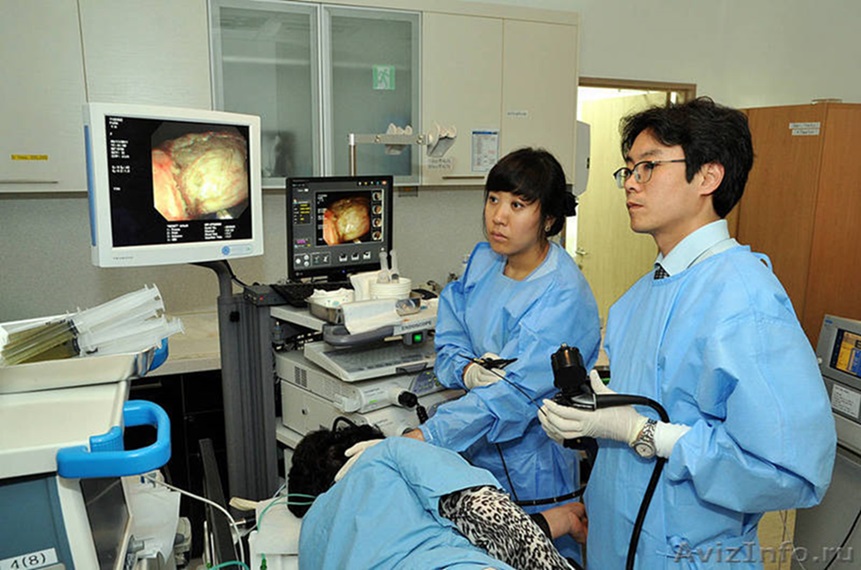South Korea is facing severe shortage of healthcare workers. With only 2.6 doctors per 1,000 population in 2020, the country is well below the OECD average of 3.7 (OECD Health Statistics, 2022). This significant shortage of practitioners in healthcare is caused by demographic, geographical, political and professional factors. The present healthcare challenges cannot be ignored.
First, the rapid ageing of the South Korean population is leading to a marked increase in the prevalence of chronic diseases and co-morbidities. Nearly a quarter of Koreans will be 65 years of age or older in 2030 (Korea Employment Information Service, 2021). This epidemiological transition requires increasing needs for medical personnel, particularly in the areas of geriatrics and primary care.
In addition, doctors tend to concentrate in major urban centres, such as Seoul and its surroundings, which comprise almost 50% of the country’s specialists (KMA, 2015). Rural areas suffer from this unequal distribution of care. On average, the number of doctors per 10,000 inhabitants is three times less in rural areas than in Seoul (5.4 vs. 16.5) (KIHASA, 2019).
Finally, the drastic decrease in the number of clauses decided in the 2000s under pressure from medical unions created a chisel effect, with massive retirements of retired practitioners and a lack of succession. Between 2001 and 2016, the number of new medical students dropped by 21% (KMA, 2017).
The combination of these multiple dynamics creates a major risk of a shortage of doctors in the medium term in South Korea. Understanding the origins of this emerging health crisis is a critical issue for governments. This analysis will then lead to solutions tailored to the local context and specificities of the country.
Shortage of Physicians and Other Factors
A. Population ageing: increasing chronic disease and demand for care
The rapid ageing of the South Korean population is emerging as a key determinant of the shortage of medical personnel. The anticipation that by 2030, nearly a quarter of Koreans will be 65 years of age or older (Korea Employment Information Service, 2021) raises significant challenges related to the increase in chronic diseases and co-morbidities. This demographic transition is placing greater pressure on the health system, with increasing needs for health professionals specializing in geriatrics and primary care.
The complexity of medical cases in the context of old age requires a skilled and sufficient workforce. Physicians need to develop specific skills to effectively treat age-related diseases, and training and recruitment efforts should be targeted accordingly. In addition, a proactive approach to anticipating and managing health challenges associated with ageing is crucial, involving programs for the prevention and management of chronic diseases.
B. Geographic concentration of physicians in major cities
The geographical disparity in the distribution of physicians creates significant barriers to access to care, especially for people living outside major urban centres. The high concentration of health professionals in and around Seoul contributes to this inequality. Innovative solutions, such as financial incentives or rural-based training programs, could encourage physicians to move to underfunded areas.
An integrated approach would also involve the development of mobile health services and the establishment of medical centres in rural areas, allowing for easier access to care. The creation of collaborative networks between urban and rural medical institutions could help to share resources and expertise, thereby reducing geographical disparities in health care.
C. Decline in the number of clauses in the 2000s under pressure from trade unions
The policy of drastically reducing the number of clauses in the 2000s created a structural imbalance in the medical profession. The 21% decrease in the number of new medical students between 2001 and 2016 (KMA, 2017) created a potentially irreversible deficit. To address this situation, a reassessment of the number clauses is required, focusing on long-term strategic planning to ensure a steady flow of new health professionals.
The revision of medical school admission policies should consider the population’s future needs, with a focus on critical medical specialities. A balance between the quality of medical training and the number of trained professionals is essential to meet the growing health demands of South Korean society. At the same time, incentives such as scholarships or mentoring programs could be considered to encourage more students to pursue medical careers.
In summary, a thorough understanding of the structural factors contributing to the shortage of doctors in South Korea can identify effective solutions. A holistic approach, combining appropriate training policies, balanced geographical distribution and strategies for population ageing, is essential to address this major public health challenge.
Implications on the Health System
The shortage of medical personnel in South Korea has profound and multifaceted implications for the health system, undermining the quality of care and the ability to meet the growing needs of the population.
A. Shortages in critical areas: paediatrics, geriatrics, emergency care
The lack of doctors is particularly acute in critical areas such as paediatrics, geriatrics and emergency care. The lack of specialist professionals in these key areas limits the ability of the healthcare system to meet the specific needs of patients, creating gaps in medical care. Targeted actions, such as incentives to attract physicians to these specialities, are crucial to strengthening these critical areas of health.
The implementation of accelerated training or retraining programmes for existing physicians could also help to bridge these gaps temporarily. It is imperative to anticipate and address these sectoral shortages to ensure comprehensive and quality medical coverage for all age groups.
B. Overwork and deterioration of working conditions for physicians
The shortage of physicians inevitably leads to increased overwork and deterioration of working conditions for those in work. Excessive workload compromises the quality of care, exposes healthcare professionals to burn-out risks and negatively affects their overall well-being. To counter this, initiatives to improve working conditions, such as flexible working hours, stress management programs and equitable distribution of work, are essential.
Investing in physician well-being policies can not only improve the quality of care but also attract and retain healthcare professionals, helping to stabilize the situation in the context of continuing shortages.
Difficulties in Responding to Epidemics
The shortage of medical personnel makes South Korea’s healthcare system particularly vulnerable to large-scale health crises, such as the COVID-19 pandemic. Insufficient capacity to deal with sudden influx of patients can lead to excess hospital capacity, saturation of emergency services and overwhelming pressure on health care professionals. To strengthen the resilience of the system, well-developed contingency plans, trained crisis-response personnel and flexible coping mechanisms are essential.
In conclusion, the shortage of medical personnel in South Korea has a serious impact on the health system, highlighting the urgent need for corrective measures. Mitigating these consequences requires a comprehensive approach, including targeted initiatives to address sectoral gaps, improve the working conditions of physicians and strengthen the system’s capacity to respond to major health crises.
After this complex exploration of the dynamics leading to the shortage of medical personnel in South Korea, a conclusion must be drawn as nuanced as the issues discussed. Through the prism of analysis, we have looked at the meshes of this emerging health crisis, revealing the interrelationships between demographic, geographic, political and occupational factors. South Korea, the rising economic and technological star, is facing a crucial challenge, where insufficient doctors resonate like a discordant sonata in its healthcare system.
A monumental challenge is the accelerated ageing of the population, with an alarming increase in chronic diseases and co-morbidities. In this demographic equation, the need for an appropriate response to geriatrics and primary care is evident. Where time elapses inexorably, the preparation of a skilled medical workforce becomes an imperative quest, requiring strategic anticipation and substantial investment in training.
The geographical landscape of this crisis continues to be woven with the shadow of the concentration of doctors in major urban centres, particularly Seoul. A pattern that leaves rural areas languishing in the medical shadows, creating care deserts with blurred contours. Reversing this trend requires deep reflection on innovative incentives and specific training programmes, redirecting medical attention to regions seeking health equity.
The diversion from the past reveals a controversial policy decision: the drastic decline in the number of clauses in the 2000s under pressure from medical unions. A choice that, like a temporal whirlwind, creates a chisel effect, widening a generational gap between massive retirements and a limited influx of new generations of physicians. The re-evaluation of this policy is an imperative necessity, requiring an overhaul of the medical school admission system to harmonize the balance between the future needs of society and the quality of medical training.
In the second part of our analytical expedition, the implications of this shortage unfold into a complex mosaic, drawing the outlines of a medical chart that is outstanding. Creepy shortages in critical areas such as paediatrics, geriatrics and emergency care are emerging as fractures in the health care system. Work overload, such as an inexorable tide, overwhelms physicians, causing deterioration in working conditions and eroding quality of care. Each patient becomes a fragment of the puzzle, and time, suppressed by scarcity, magnifies the risk of medical errors, casting a shadow over the safety of the treatments provided.
The COVID-19 pandemic, such as an unexpected storm, has revealed the inherent fragility of South Korea’s healthcare system in the face of major health shocks. The insufficient capacity to absorb a sudden influx of patients underscores the crucial need to develop strong contingency plans, trained personnel and flexible mechanisms to deal with crises of a similar magnitude.
Despite this dark web, a glimmer of hope emerges on the horizon, drawn by international cooperation. Increasing the number of clauses in medical faculties, fostering the settlement of young doctors in understaffed areas, temporarily recruiting foreign doctors, and building partnerships with international medical faculties represent all the milestones for resolving this crisis. The development of such cooperation transcends borders, transforming local challenges into global opportunities.
In light of the complexity arising from the shortage of medical personnel in South Korea, several innovative solutions can be considered to address these challenges proactively and transformatively.
- Telemedicine and Advanced Medical Technology: Investing heavily in telemedicine and advanced medical technologies could transcend geographic barriers, providing broad access to health care. Mobile medical monitoring applications, remote patient surveillance and online consultation can not only relieve pressure on overcrowded urban medical facilities but also extend the scope of care to remote areas, thereby reducing health inequalities.
- Accelerated Training and Vocational Conversion: Implementing accelerated training programs and career conversion opportunities for existing and other healthcare workers could be a rapid response to the shortage. This approach would allow for the rapid mobilization of additional labour while ensuring adequate standards of training and skills.
- International Partnerships in Medical Education: Partnering with internationally renowned medical institutions could provide opportunities for educational exchanges, enabling diversification of opportunities and adaptation to global best practices. This could include exchange programs for students, and faculty, and collaborations to develop training programs aligned with South Korea’s specific needs.
These innovative solutions, combined with a comprehensive approach and ongoing commitment, could play a crucial role in transforming South Korea’s medical landscape, thus addressing current challenges and setting the stage for a more resilient and adaptive health system.
Conclusion
The picture of the shortage of medical personnel in South Korea, depicted through this analytical odyssey, requires a multidimensional response. A call for action echoes in the depths of this finding, calling for strategic reforms, substantial investment and a long-term vision. The resilience of South Korea’s healthcare system, at the crossroads of adversity, requires bold reinvention, innovative international cooperation and an unwavering commitment to building a more robust medical future. In these final words, analytical travel gives way to an invitation to action, innovation and the creation of a stronger and more equitable medical paradigm for South Korea and beyond.
Title image courtesy: Medical Tourism
Disclaimer: The views and opinions expressed by the author do not necessarily reflect the views of the Government of India and Defence Research and Studies
REFERENCES :
1. Cho, S. (2020). Aging society and healthcare utilization in South Korea. Korean Journal of Family Medicine, 41(6), 360–365.
2. Kwon, S. (2018). Thirty years of national health insurance in South Korea: Lessons for achieving universal health care coverage. Health Policy and Planning, 33(6), 654–661.
3. Shin, J. Y., Lee, S., & Shin, Y. J. (2021). Current state and future challenges of telemedicine in South Korea. Healthcare Informatics Research, 27(1), 3–10.
4. Kim, A. R., Kim, K., & Kim, Y. (2019). Physician workforce in South Korea: Current status and challenges. Journal of Korean Medical Science, 34(1), e44.
5. OECD. (2022). OECD Health Statistics 2022. Organisation for Economic Co-operation and Development.
6. Korea Employment Information Service. (2021). Labor Force Survey. Retrieved from https://survey.keis.or.kr/
7. Korea Medical Association (KMA). (2015). Korean Medical Workforce Status. Retrieved from http://www.kma.org/
8. Korea Institute for Health and Social Affairs (KIHASA). (2019). Health and Welfare Policy Issues in Korea. Retrieved from https://www.kihasa.re.kr/
9. KMA. (2017). Statistical Yearbook of the Medical Community in Korea. Retrieved from http://www.kma.org/
10. Ministry of Health and Welfare (MOHW). (2020). Healthcare Bigdata Hub. Retrieved from https://opendata.hira.or.kr/
11. Oh, J., Lee, Y., & Lee, J. (2018). A qualitative exploration of the Korean physician workforce: Attitudes in the era of low fertility. Human Resources for Health, 16(1), 54.
12. Yoon, T. H., & Cho, J. (2019). Predicting physician shortages in South Korea using a system dynamics model. BMC Health Services Research, 19(1), 783.
13. Lee, Y. R., Shin, H. T., & Kim, K. K. (2017). Current status and prospects of medical education reform at Seoul National University College of Medicine. Journal of Educational Evaluation for Health Professions, 14, 5.
14. Kang, S. H., & Boo, Y. J. (2019). The effect of changes in medical insurance benefit coverage on the use of health care services by children in South Korea. BMC Health Services Research, 19(1), 219.
15. Jeon, W. S., Ju, B. J., & Kim, T. H. (2018). Investigating the spatial accessibility of healthcare facilities: A case study of South Korea. Spatial Information Research, 26(3), 249–259.
16. Kim, D. S., & Yang, J. S. (2018). An evaluation of the physician workforce in South Korea: At present and in the future. Health Policy and Management, 28(3), 290–297.
17. Lim, M. K., & Yang, H. J. (2019). Changes in geographic accessibility of community hospitals after implementing the single employment contract policy in South Korea. Journal of Preventive Medicine and Public Health, 52(3), 180–188.
18. Park, S. Y., & Kim, Y. J. (2019). Influence of community hospital mergers on hospital efficiency in South Korea. Health Policy and Management, 29(2), 166–174.
19. Yoon, T. H., & Cho, J. (2019). The effects of physician wage equalization: Evidence from South Korea. BMC Health Services Research, 19(1), 327.
20. Kim, H. K., Yoon, S. J., & Oh, I. H. (2018). Population health management in South Korea: Current status and future prospects. Journal of Korean Medical Science, 33(26), e177.







